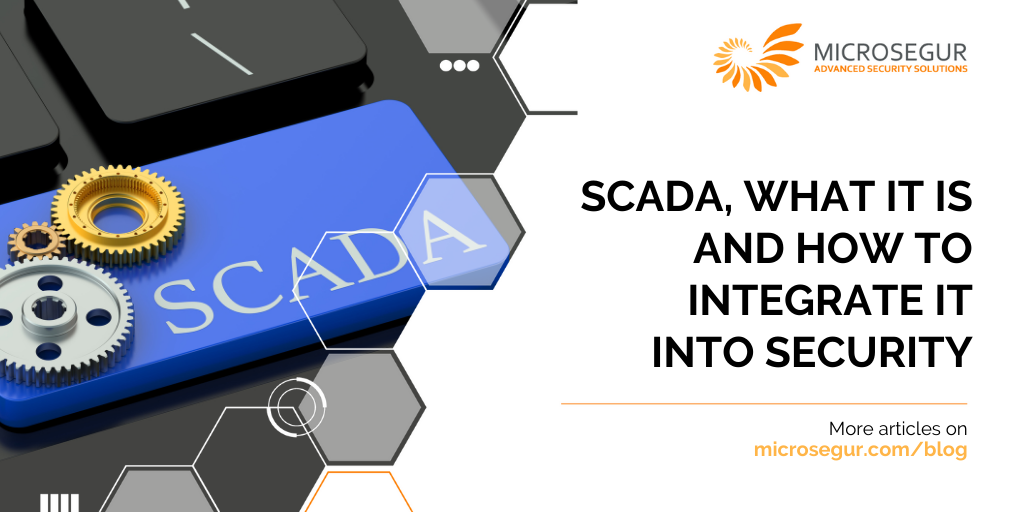SCADA systems are used by most companies in the industrial sector to be able to control the operation and performance of their devices and machinery, allowing to anticipate possible failures or breakdowns and guaranteeing optimal operation at all times. SCADA, what it is and how to integrate it into a security system.
The application of these systems in the security sector has made it possible to take a leap in quality when it comes to controlling and managing all the devices used in a video surveillance and security system. The operation of an ARC or Alarm Receiving Center offers a more efficient management of all the elements of the security system such as sensors, cameras or access controls, among others.
What is SCADA?
A supervision, control and data acquisition system or SCADA (Supervisory Control And Data Acquisition) is responsible for collecting all the operational data generated by a system to process them and determine if they are within the optimal margins for adequate operation. In other words, it is a monitoring system that allows to know if any value or parameter of the equipment that is being used in an activity is outside the recommended range and thus be able to apply the necessary measures to correct it.
SCADA is a system that began to be used before the rise of the internet, so it has had to adapt to new technologies in order to be efficient only for isolated systems (without external connections). Today SCADA systems include security measures that allow them to be integrated into network systems and in the cloud, allowing greater control and management of operations without being dependent on a specific location.

What are the characteristics of SCADA systems
The main characteristics of SCADA systems are:
- They allow monitoring and supervision of all remote systems.
- They generate alarms when an incident occurs to ensure an immediate response.
- They are capable of processing a large amount of data and performing complex mathematical calculations.
- They incorporate a control panel to improve communication between machines and operators (HMI interface).
- They offer internal and external communication with any team.
- It is a scalable system that can be expanded according to the needs or demands of the company.
- Create historical records and reports so you can compare and improve.
How to integrate SCADA into a security system
In the security sector, the use of a SCADA system allows to have a more efficient and real-time control of all the elements used for surveillance and security. These elements such as cameras, access controls or motion sensors can be remotely monitored and controlled that it is within the appropriate parameters for its correct operation.
What are the advantages of SCADA integration in a security system
Using a supervision, control and data acquisition system in an alarm receiving center offers a series of advantages when it comes to controlling all the security devices installed.
False alarm reduction
One of the most important problems for security managers is how to avoid false alarms. Most of the alarms that are generated are usually caused by circumstances or situations that do not imply a security risk such as failure in the electrical supply of a device, incursion of an animal, effects of the weather, malfunction of a device, and many others.
With SCADA, an efficient system will be available that will significantly reduce the number of false security alerts, saving time, effort and money.
Cost reduction
By having real-time data from all the devices, malfunctions or outside the established ranges can be detected that can be symptoms of a failure. In this way, you can act preventively and avoid breakdowns with a higher repair cost.

Optimizes the operation of security systems
With SCADA, the entire operation of a security system can be optimized, making it more agile, safe and efficient. With a specific tool based on this type of device control and monitoring system it will be possible to receive all the signals from the installed devices. These signals will be verified, filtered and cataloged centrally. In this way, it will be possible to identify those alarms that correspond to real alerts and thus be able to efficiently activate the established protocols (notification to clients, guards or security forces).
These types of systems allow better maintenance of the security installation and optimize the entire process that must be carried out when detecting a real incident. If, for example, a problem is detected in a device, it is immediately communicated to the maintenance manager or technician so that he can come to carry out the repair in the shortest possible time (also communicating to the customer).
In the case of a real security alarm, the system enables the protocols and policies to be activated instantly, with simultaneous notifications to the security services and to the client himself. In this way, you can act immediately and neutralize or minimize the consequences of the intrusion or the security problem.
The appearance of control systems such as SCADA allowed the industrial sector to take a leap in quality by optimizing its entire production process by having greater control and knowledge of the operation of all its devices and machinery.
Over time, SCADA-based tools have evolved, being able to manage all devices safely remotely and centrally, through a control panel that facilitates their management and reduces action times.
The integration of SCADA in security systems has meant a great improvement in the sector, which now has tools that provide greater control over all the elements and devices that make up an installation. Accelerating response times, identifying real security alerts and reducing maintenance and repair costs are the main benefits of this solution in a security system.




